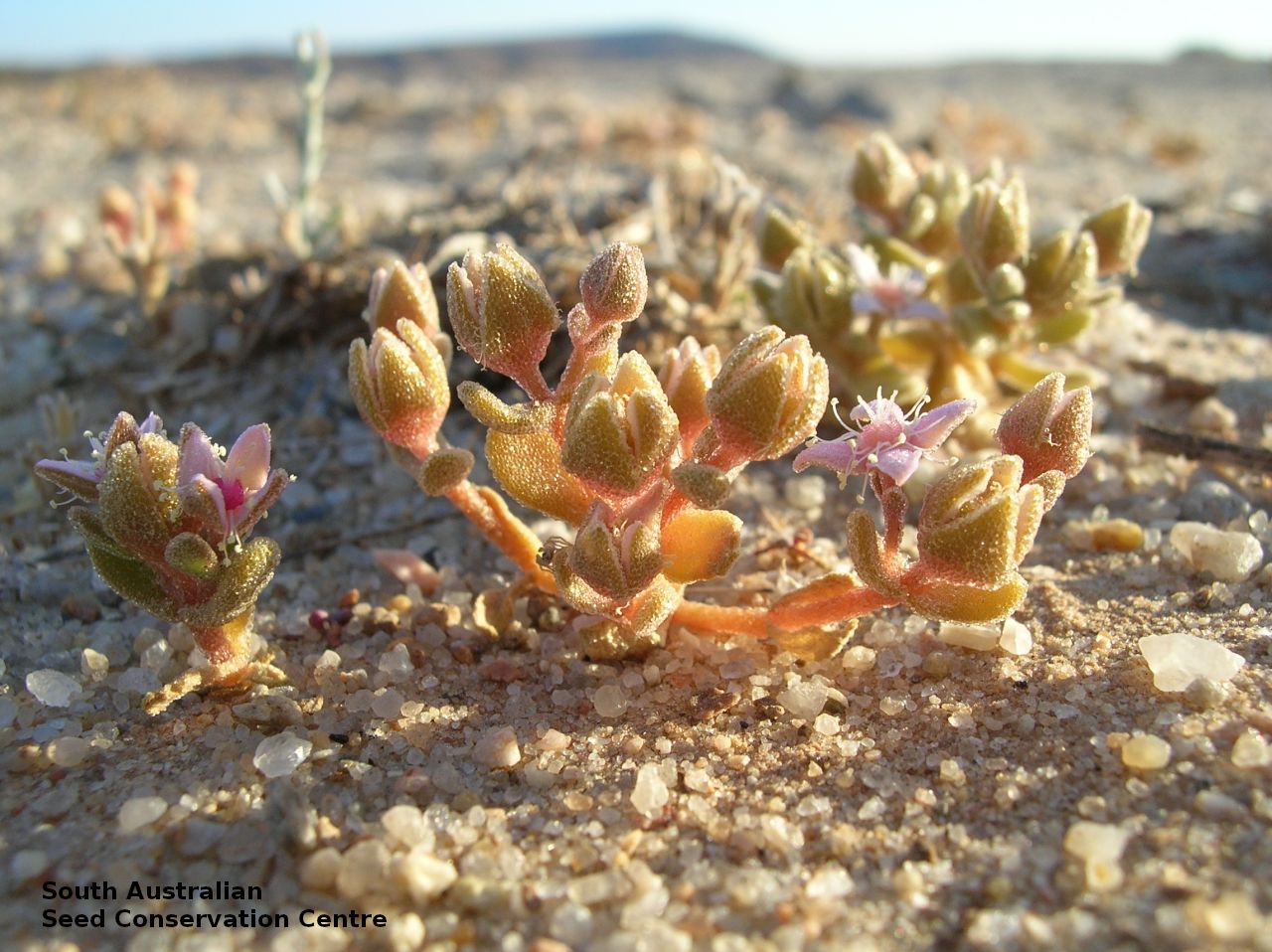
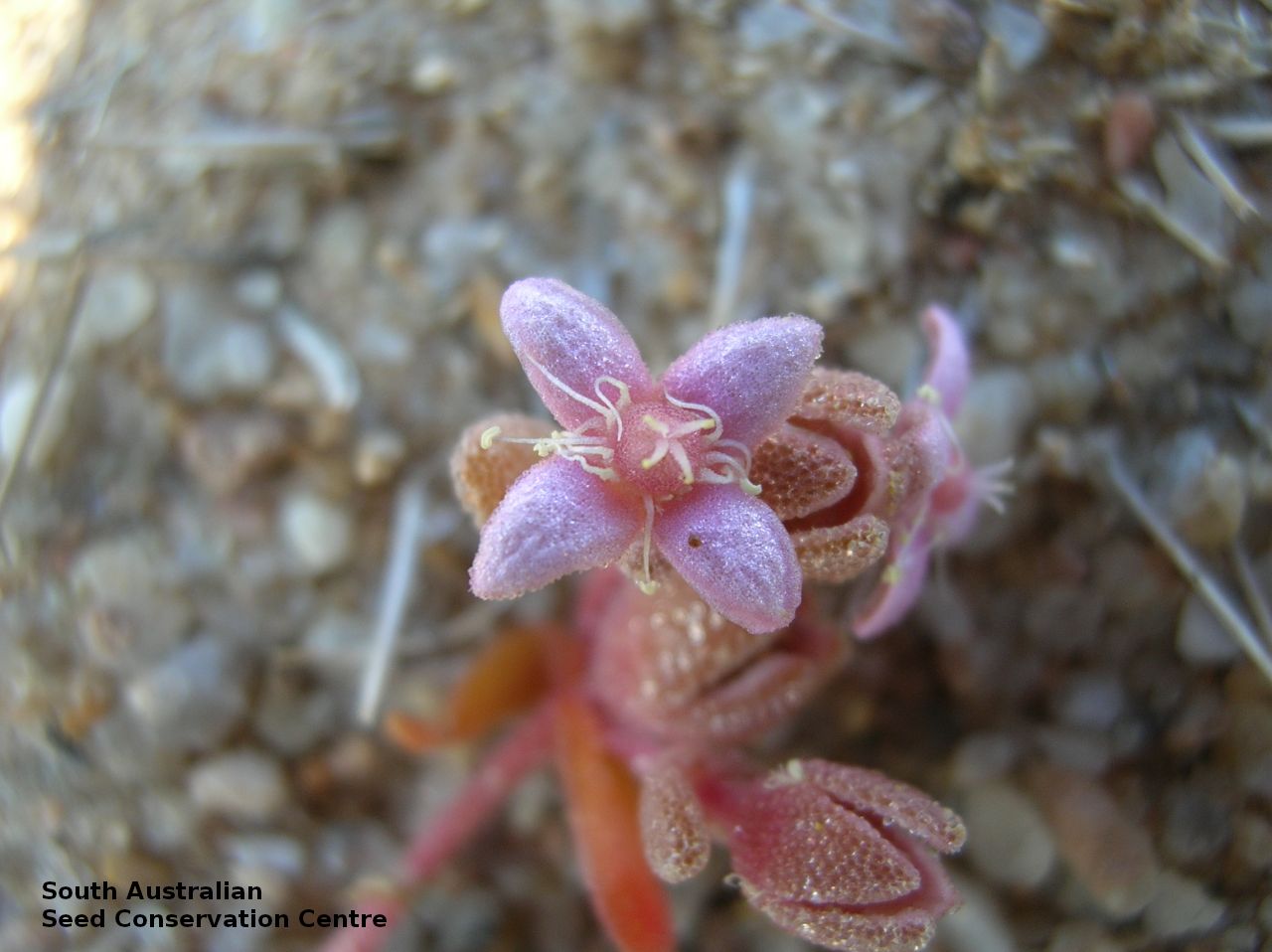
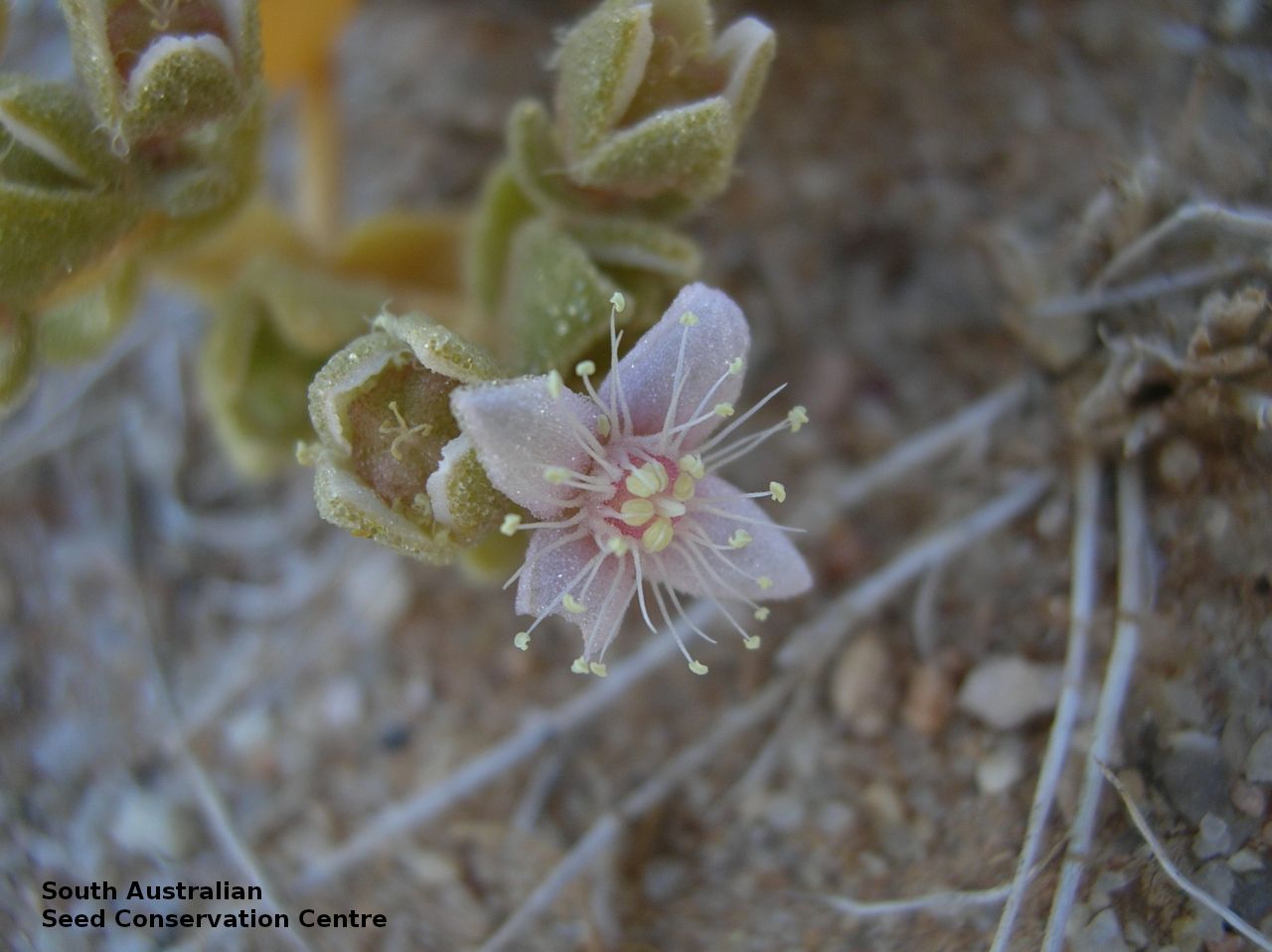
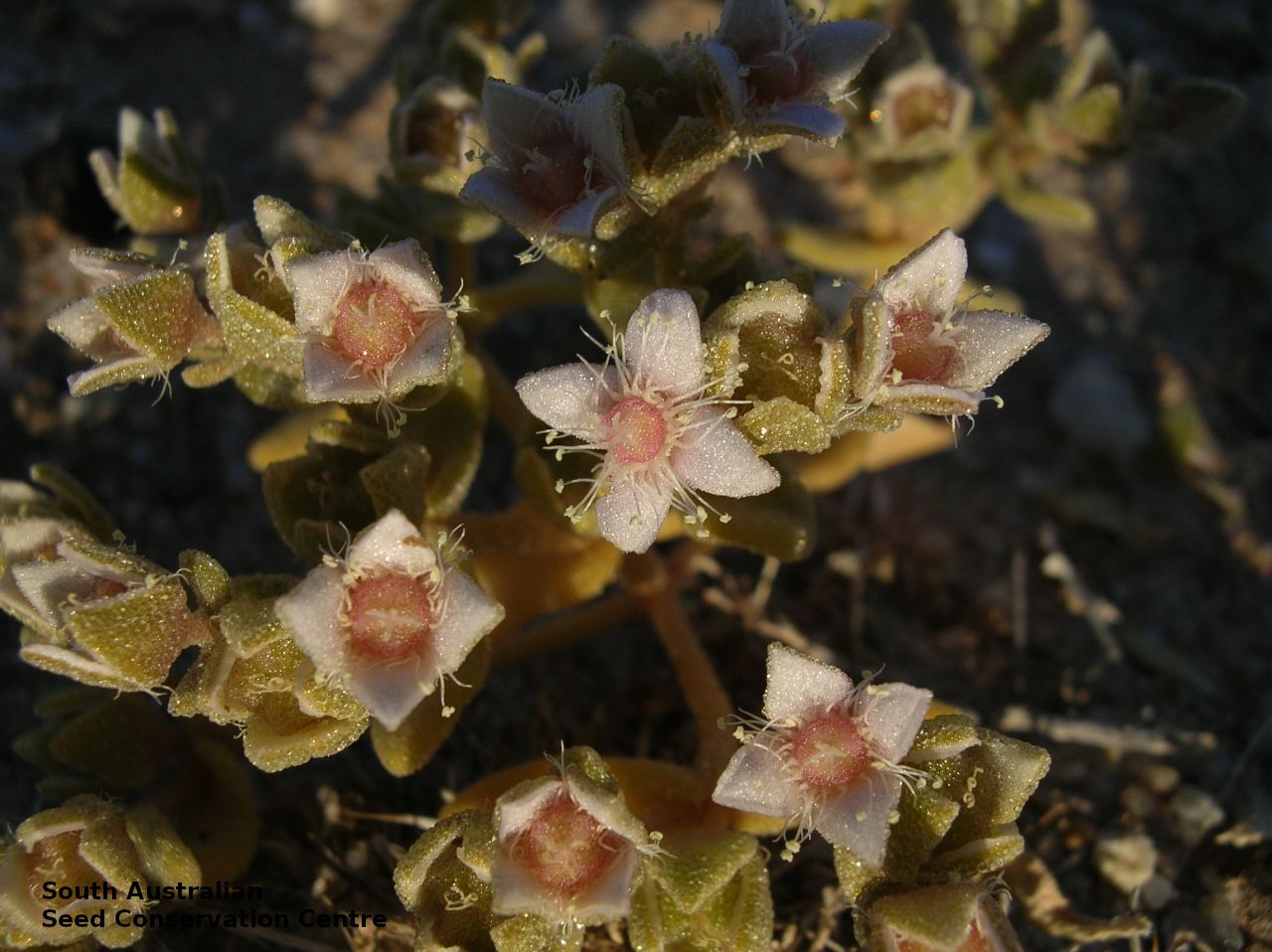
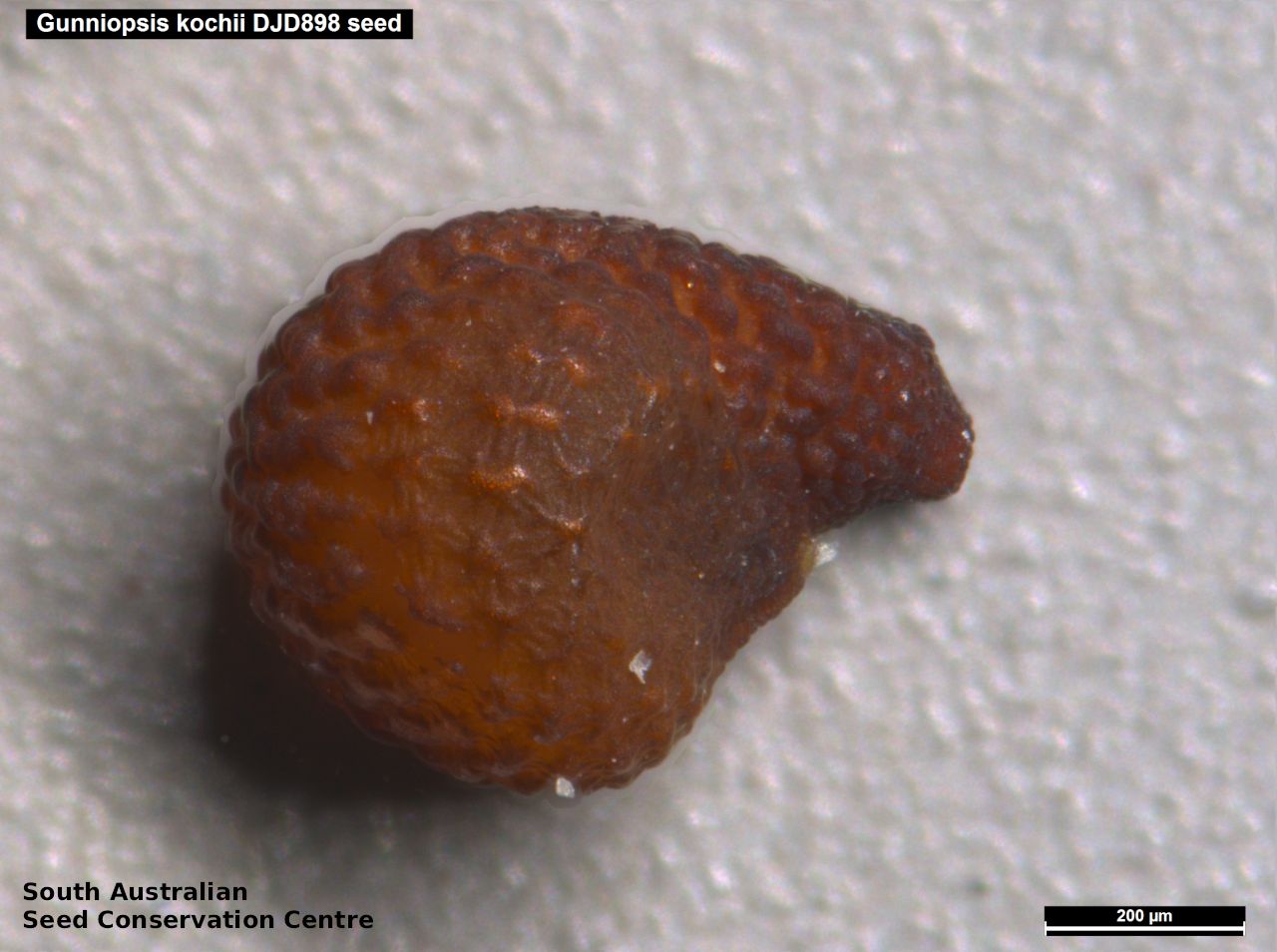


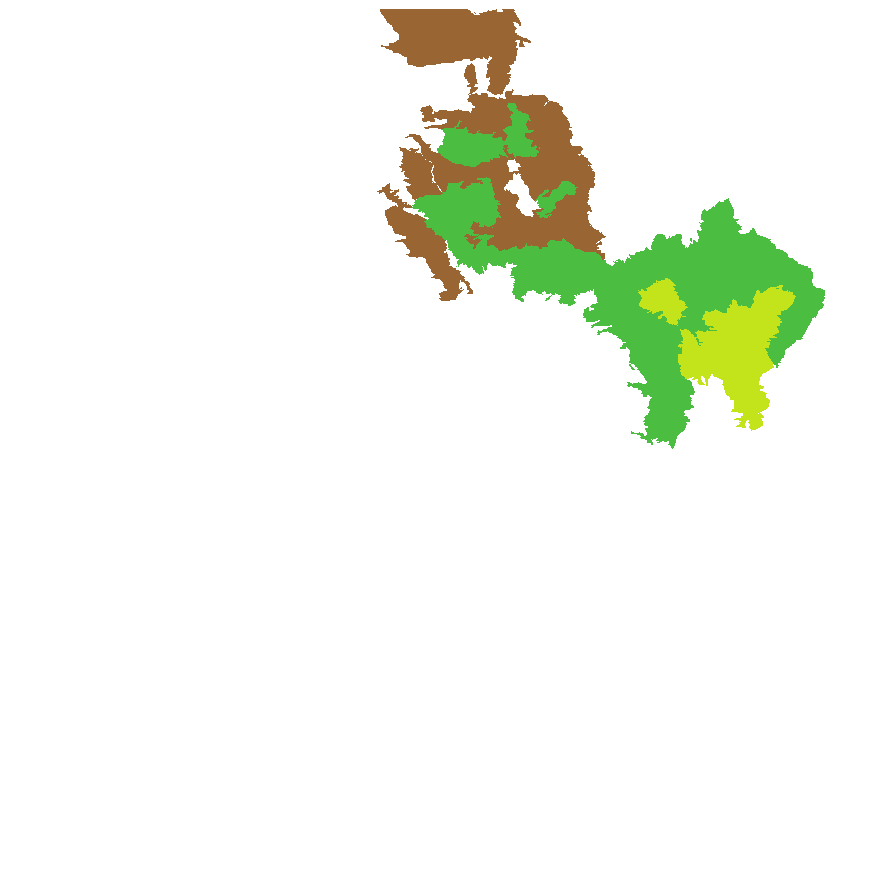
Botanical art
Prior names
Aizoon kochii
Etymology
Gunniopsis from the genus Gunnia, named after Ronald Campbell Gunn (1808-1881), a Tasmanian botanist, and from the Greek 'opsis,' meaning resembling, alluding to the resemblance of this genus to the genus Gunnia. Kochii named in honour of Maxwell "Max" Koch (1854-1925), a German-born Australian botanical collector.
Distribution and status
Endemic to South Australia and restricted to Lake Eyre, Gairdner-Torrens and Flinders Ranges regions, growing on stony soils, especially on gibber plains. Native. Uncommon in South Australia.
Herbarium regions: Lake Eyre, Gairdner-Torrens, Flinders Ranges
NRM region: South Australian Arid Lands
AVH map: SA distribution map (external link)
Plant description
Greyish to green, sparsely branching annual herb to 20 cm high, covered with dense nipple-like projections. Leaves ovate to oblanceolate; somewhat fleshy, to 30 mm long and 11 mm wide. Flowers solitary purple or pink inside; terminal or in the forks of the branches, (axillary). Flowering between September and October. Fruits are brown, depressed-globular capsule to 7 mm diameter, with two valves. Seeds are small brown reniform seed to 0.6 mm long; covered with round tubercules. Seed embryo type is peripheral.
Seed collection and propagation
Collect seeds between November and December. Pick mature capsules when they turn a straw colour and contain hard dark seeds. Place the capsules in a tray and leave to dry for at least a week. Then rub the dried capsules to dislodge the seeds. Use a sieve to separate the unwanted material. Store the seeds with a desiccant such as dried silica beads or dry rice, in an air tight container in a cool and dry place. From one collection, the seed viability was high, at 95%.